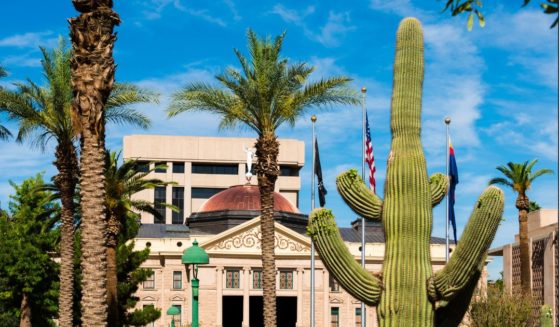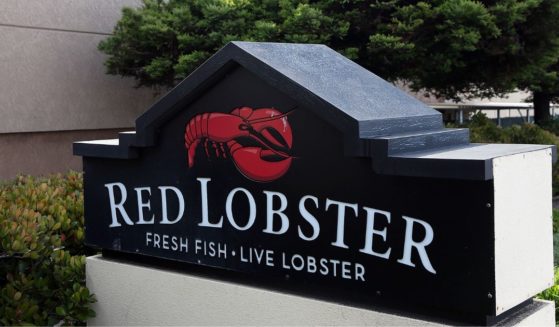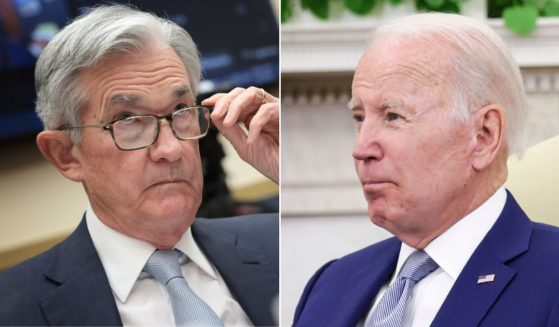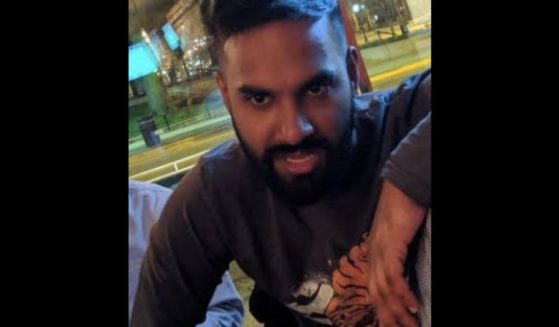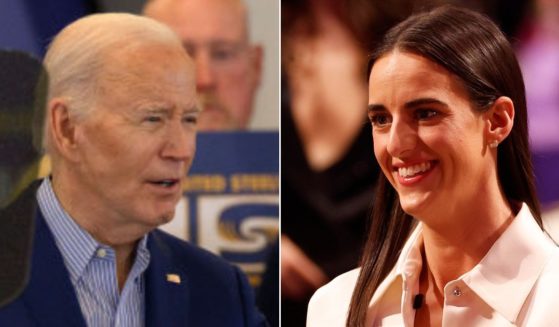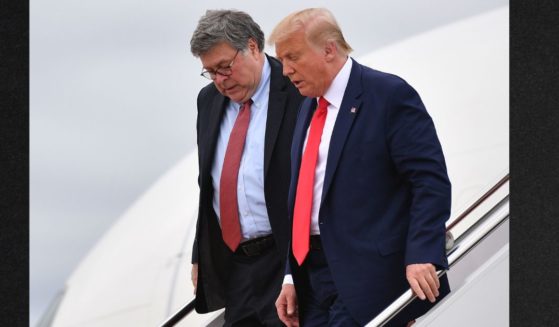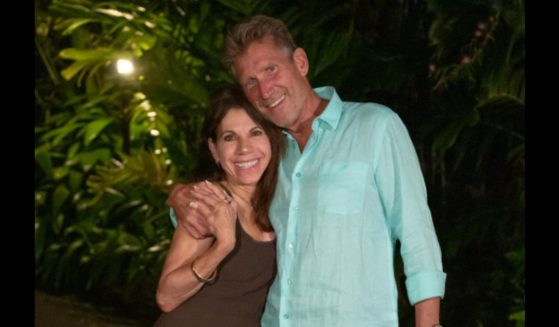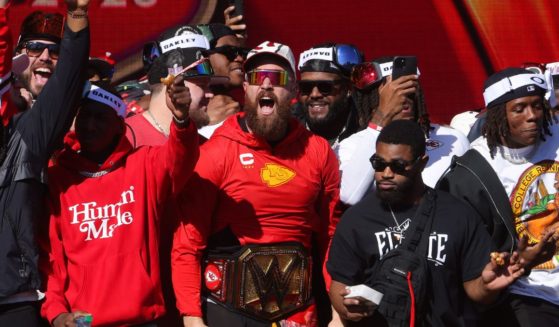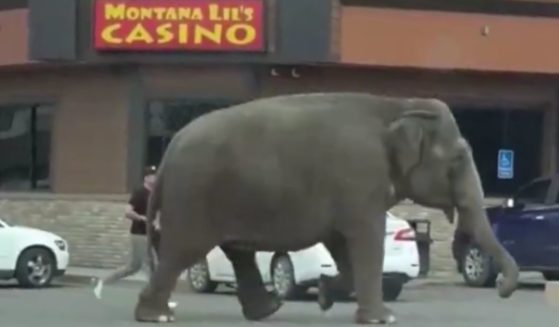Park Police Expose Media Lies on Trump's St. John's Walk: 'No Tear Gas Was Used'
You can learn a lot from The New York Times, although not exactly what its editors might want you to take away.
On Monday, after President Donald Trump visited St. John’s Episcopal Church in Lafayette Square after it was damaged by rioters, reports emerged that the U.S. Park Police used tear gas to clear peaceful protesters from the location so that Trump could visit. Not only that, the visit was portrayed as a “photo-op” — no symbolism involved, mind you, just something for the cameras.
The Times’ headline: “Protesters Dispersed With Tear Gas So Trump Could Pose at Church.”
“People who gathered outside the White House to protest police brutality spent Monday waving signs and screaming for justice. They watched as police officers and National Guard units flooded Lafayette Square, delivering on a threat made by President Trump. And just before the city’s 7 p.m. curfew went into effect, they were hit with flash-bang explosions and doused with tear gas,” the open to reporter Katie Rogers’ story read.
“It was because the president, who spent part of the weekend in a secure bunker as protests roiled, wanted to have his picture taken holding a Bible at a battered church just beyond the gates.”
That sets quite the scene. The veracity left something to be desired, mind you, but you can’t top that for simply bringing you there. A group of nonviolent protesters, screaming their lungs out to get justice for George Floyd — how this was helping wasn’t made clear and it’s also worth noting we were, until recently, so concerned about COVID-19 that this cluster of humanity would be considered abhorrent — was suddenly fired upon with tear gas so that the president could take some pictures.
And to think — they had signs.
There were elements of those original reports that I didn’t exactly view with unmixed delight, although there was some confusion in the reporting I saw whether or not the Park Police had dispersed the protesters before or after the 7 p.m. curfew and, more importantly, what exactly was used to disperse them. Katie Rogers, however, sounded awfully certain in the facts she had. She shouldn’t have been.
In a statement, the Park Police said no tear gas was used against the protesters, and they weren’t necessarily peaceful — unless, that is, your definition of peaceable involves hurling projectiles at law enforcement.
According to Fox News, a statement Tuesday by the Park Police said “no tear gas was used” in Lafayette Park and that the steps that were taken were “to curtail the violence that was underway.”
“At approximately 6:33 pm, violent protestors on H Street NW began throwing projectiles including bricks, frozen water bottles and caustic liquids,” the statement read.
“The protestors also climbed onto a historic building at the north end of Lafayette Park that was destroyed by arson days prior. Intelligence had revealed calls for violence against the police, and officers found caches of glass bottles, baseball bats and metal poles hidden along the street.”
The statement acknowledged that “[a]s many of the protestors became more combative, continued to throw projectiles, and attempted to grab officers’ weapons, officers then employed the use of smoke canisters and pepper balls when protestors did scatter from the area.”
Other details began to emerge that made the situation seem less like it was the caprice of a president wanting a photo shoot and more like a series of events that had been put into play long before the president’s walk to St. John’s.
On Tuesday, reporting from The Washington Post and CBS News seemed to confirm the decision to extend the perimeter around the white House had been made late Sunday or early Monday by Attorney General William Barr.
The Washington Post said this was a decision that led “to use of force against [a] largely peaceful crowd,” a thought which, going by the Park Police’s statement and other reporting, certainly takes a expansive view of the word “largely.” WTOP-TV in Washington said that “[d]eeper reporting reveals that protesters did begin to get arrested, throwing water bottles, rocks and other projectiles at the oncoming police.”
Largely peaceful, though.
Nobody, WTOP noted, seemed to understand why reporters at the scene characterized the irritant as tear gas or where the confirmation had come from regarding the use of tear gas, if it had come at all.
The difference between tear gas and smoke canisters is a pretty significant one; the use of tear gas would indicate an almost indiscriminate use of force in order to clear protesters, whereas smoke canisters would simply indicate an expeditious way to get them out of there. This could be a lie on the Park Police’s part, but this would be a difficult deception to maintain and no source has come forward thus far with direct evidence to contradict the statement.
Even in the age of video, what happened in Lafayette Square will likely remain a “Rashomon”-like event. To some, the very fact the administration tried to expand the perimeter around the White House — an area that had seen a rash of protests that even the apologists at The Washington Post couldn’t pass off as “largely peaceful” — and did so before the president’s visit to St. John’s Episcopal Church is the sign of a dictator.
Writing about the controversy on Tuesday, I quoted a piece by The Post’s Jennifer Rubin, someone whose take on the matter reads as if she were typing with one hand and holding the paper bag they were furiously breathing into with the other.
“Nothing could be more representative of the dangerous narcissism of a president in over his head, resorting to threats of violence against a country he ostensibly is supposed to lead. The deliberate instigation of violence for his own photo op tells Americans how deeply twisted and deformed his character is,” Rubin wrote in one particularly empurpled passage of the Monday evening piece.
I suppose looking back upon opinions written hastily after a flashpoint event reveals cracks that will always appear in a rush job. However, I find one thing that sticks out, both in Rubin’s piece especially but also in the media coverage generally.
There’s plenty of fulmination to be had about the “deliberate instigation of violence” by the president for what’s seen as a mere photo op, not as a show of strength and solidarity after a psychically symbolic attack on an American icon. Little, if any, anger is spent upon the violence of the rioters.
The church, it seems, had burned itself. The Park Police acted upon a group of protesters as pacific and calm as a summer breeze. No, it’s the authorities who represent violence — and that violence starts at the top. Why, they even used tear gas! Or maybe not, but what’s the difference?
To ignore or elide over the violence that desecrated St. John’s is to countenance it — and that’s exactly what the media did. “Protesters Dispersed With Tear Gas So Trump Could Pose at Church,” indeed.
Truth and Accuracy
We are committed to truth and accuracy in all of our journalism. Read our editorial standards.

